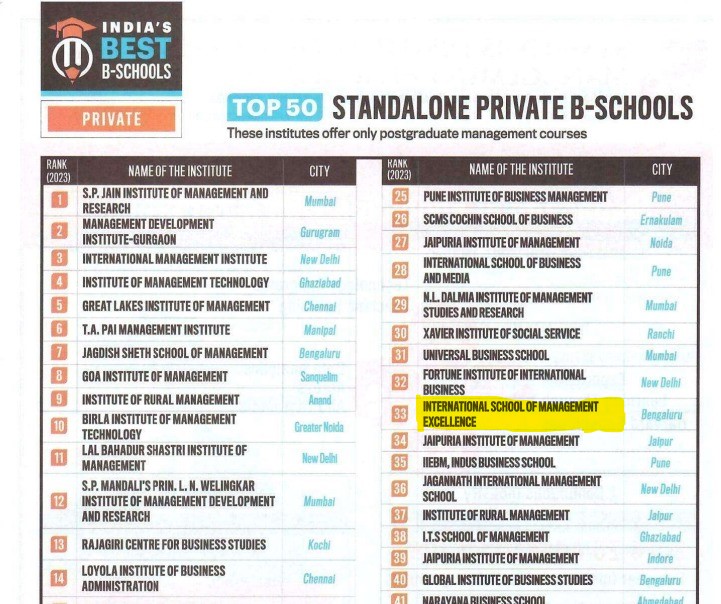A
Sector that’s All in the Pink of Health
KIRAN KUMAR K V
Indian healthcare sector is on
the go. With a series of IPOs and private equity over the past few years,
innovative processes and entry of bigger players, Indian healthcare sector is
currently the most adored investment destination by the investing community. Sector
is the next big thing to look out for or so it seems. By healthcare sector, we
mean hospitals, pharmaceuticals, medical insurance, medical equipment &
supplies and diagnostics. Almost 3/4th of the revenue of the sector
comes through hospitals. The sector can be segmented as public and private, of
which the latter contributes almost 74% of the healthcare expenditure of households
(for obvious reasons..!!) primarily from tier-I and tier-2 cities. Below Figure-1 presents a classified view of
the sector.
the go. With a series of IPOs and private equity over the past few years,
innovative processes and entry of bigger players, Indian healthcare sector is
currently the most adored investment destination by the investing community. Sector
is the next big thing to look out for or so it seems. By healthcare sector, we
mean hospitals, pharmaceuticals, medical insurance, medical equipment &
supplies and diagnostics. Almost 3/4th of the revenue of the sector
comes through hospitals. The sector can be segmented as public and private, of
which the latter contributes almost 74% of the healthcare expenditure of households
(for obvious reasons..!!) primarily from tier-I and tier-2 cities. Below Figure-1 presents a classified view of
the sector.
Figure
1: Classified
View of Indian Healthcare Sector
1: Classified
View of Indian Healthcare Sector
THE BOOM
Let’s first answer why, off
late, healthcare industry in India is demanding substantial attention of
business and investment researchers. As such the global healthcare sector is
going through a period of “GLOCALISATION”
leading both increased consumption and supply of medical services. Global
healthcare spending in itself is growing at a rate higher than 5%. Indian
healthcare industry presents an even more dynamic case for discussion:
late, healthcare industry in India is demanding substantial attention of
business and investment researchers. As such the global healthcare sector is
going through a period of “GLOCALISATION”
leading both increased consumption and supply of medical services. Global
healthcare spending in itself is growing at a rate higher than 5%. Indian
healthcare industry presents an even more dynamic case for discussion:
Firstly, healthcare sector in India is expected to grow at a CAGR of 23% between
2015 & 2020, which is way above the expectations from any other single
sector (including the BFSI, which was till recently the darling of market
participants). By 2020 the industry is expected to be of a US$ 280 billion size
against a current size of US$ 100 billion (2015). Figure-2 presents the trend of sector size growth between 2008 and
2016 and also gives the estimate for 2020.
2015 & 2020, which is way above the expectations from any other single
sector (including the BFSI, which was till recently the darling of market
participants). By 2020 the industry is expected to be of a US$ 280 billion size
against a current size of US$ 100 billion (2015). Figure-2 presents the trend of sector size growth between 2008 and
2016 and also gives the estimate for 2020.
Figure 2: Healthcare Sector Growth Trend |
Secondly, healthcare
spending percapita is growing at 5% to nearly US$ 70 billion in 2015. Indian
healthcare industry is the sixth largest healthcare market globally (2014). By
2020 the industry is expected to be third largest. Policies favoring the sector
like FDI allowance, listing support, tax benefits and liberal government
policies are constantly helping the industry players to raise funds with
never-seen-before ease, especially the private equity sphere.
Thirdly, there are signs of growth phase
activities by the industry. In the last 6 months there were five initial public
offers made and successfully oversubscribed. Total capital raised in the
primary market is accounted to be Rs. 4317 Crore. A snapshot of the same in
below Table-1:
activities by the industry. In the last 6 months there were five initial public
offers made and successfully oversubscribed. Total capital raised in the
primary market is accounted to be Rs. 4317 Crore. A snapshot of the same in
below Table-1:
Table 1: Recent IPOs
of Healthcare Sector
of Healthcare Sector
Company | Subscription | Listing | Raised | |
1 | Dr. Lal Pathlabs Ltd | 33.41 times | 52% gain | Rs. 829 Crore |
2 | Alkem Laboratories Ltd | 44.29 times | 31% gain | Rs. 1745 Crore |
3 | Narayana Hrudayalaya Ltd | 8.67 times | 35% gain | Rs. 613 Crore |
4 | Healthcare Global Enterprises (HCG) Ltd | 1.56 times | 22% loss | Rs. 650 Crore |
5 | Thyrocare Technologies Ltd | 73.55 times | 39% gain | Rs. 480 Crore |
Total | Rs. 4317 Crore | |||
Fourthly, the macro-economic outlook
is all congenial for the sector. Income levels are rising, health consciousness
is increasing among households, easy access to high-quality healthcare
facilities, health insurance penetration is on the rise, rising urbanization.
It may be interesting to note that, more than 50% of the spending on in-patient
beds is on lifestyle diseases caused by high-cholesterol, high blood pressure,
obesity, poor diet and alcohol. While this is not a welcome sign for the
society at large, it does bring a higher demand for healthcare services and
benefit the sector.
is all congenial for the sector. Income levels are rising, health consciousness
is increasing among households, easy access to high-quality healthcare
facilities, health insurance penetration is on the rise, rising urbanization.
It may be interesting to note that, more than 50% of the spending on in-patient
beds is on lifestyle diseases caused by high-cholesterol, high blood pressure,
obesity, poor diet and alcohol. While this is not a welcome sign for the
society at large, it does bring a higher demand for healthcare services and
benefit the sector.
KEY PLAYERS
The sector uses number of beds as a
metric to measure the market share. The major players thus would be Apollo
Hospitals, Aravind Eye Hospitals, CARE Hospitals, Fortis Healthcare, Max
Hospitals, Manipal Group and Narayana Health. Figure-3 below presents the market share of key players of the
industry.
metric to measure the market share. The major players thus would be Apollo
Hospitals, Aravind Eye Hospitals, CARE Hospitals, Fortis Healthcare, Max
Hospitals, Manipal Group and Narayana Health. Figure-3 below presents the market share of key players of the
industry.
TRENDS & OPPORTUNITIES
Changing Needs Apart from the differing needs personalized healthcare, by replacement of
traditional diseases by lifestyle related diseases, affordability of generic
drugs is also increasing. It is surveyed that additional 3 million beds, 1.54
million doctors, 2.4 million nursing staff and an investment of US$ 200 billion
are the additionally needed by 2025 for the industry to operate in full
capacity.
traditional diseases by lifestyle related diseases, affordability of generic
drugs is also increasing. It is surveyed that additional 3 million beds, 1.54
million doctors, 2.4 million nursing staff and an investment of US$ 200 billion
are the additionally needed by 2025 for the industry to operate in full
capacity.
Focus on Tier-2 & Tier-3 Cities Expansion by multiple players into tier-2 and tier-3 cities by private
sector is another emerging trend. For instance, Vaatsalya Healthcare is one of the first chain of hospitals
to focus on tier-2 and tier-3 cities and has been successfully implemented the
model.
sector is another emerging trend. For instance, Vaatsalya Healthcare is one of the first chain of hospitals
to focus on tier-2 and tier-3 cities and has been successfully implemented the
model.
Network Mode of Operations Many hospitals are expanding in a chain
of hospitals model, enabling them a greater cost advantage. Players like Manipal, Fortis and Apollo
are entering into management contracts with local hospitals, adding up to their
revenues.
of hospitals model, enabling them a greater cost advantage. Players like Manipal, Fortis and Apollo
are entering into management contracts with local hospitals, adding up to their
revenues.
Telemedicine Usage
of ICT network to diagnose and consult is eliminating the geographical
barriers, including for critical care and emergency situations. Telemedicine
market alone is growing at a CAGR of 20% and many Public-Private Partnerships
projects are operational in this space. Mobile Health Service, supported by
increased internet speed (aka 4G) is supporting service oriented initiatives in
the country.
of ICT network to diagnose and consult is eliminating the geographical
barriers, including for critical care and emergency situations. Telemedicine
market alone is growing at a CAGR of 20% and many Public-Private Partnerships
projects are operational in this space. Mobile Health Service, supported by
increased internet speed (aka 4G) is supporting service oriented initiatives in
the country.
Health Insurance A whopping US$ 2.9 billion of health insurance premium were collected in
2013 with a CAGR of 26%. This would enable the industry with increased top
line. This is expected to do what credit cards have done to the retail
industry.
2013 with a CAGR of 26%. This would enable the industry with increased top
line. This is expected to do what credit cards have done to the retail
industry.
Medical Tourism Medical tourism is expected to be of US$ 8 Billion sized by 2020. Currently
more than 3 million medical tourists are visiting India annually.
more than 3 million medical tourists are visiting India annually.
Operational Efficiency Ably supported by technology and digitization, healthcare companies are
able to manage their operations in a cost-efficient, patient-engaging, focused
high service quality delivery. E-Commerce companies like Health Kart are emerging that deliver heath care products
taking orders online.
able to manage their operations in a cost-efficient, patient-engaging, focused
high service quality delivery. E-Commerce companies like Health Kart are emerging that deliver heath care products
taking orders online.
FDI Support 100%
FDI is allowed under the automatic route for Greenfield projects.
FDI is allowed under the automatic route for Greenfield projects.
Availability of Talent Large pool of medical professionals is in supply. Cost advantage is on the
rise.
rise.
M&A In the last 3 years there
were nearly 7 major M&A transactions that consolidated the otherwise
fragmented industry. Table-2 below
presents a snapshot of these deals. It may be noted that most of these are in
the pharma space and the motives of most of these mergers were expansion into
Indian markets by globally renowned players. It may be noted that more than 70%
of the M&As between 2013 & 2015 were in the pharmaceutical space.
were nearly 7 major M&A transactions that consolidated the otherwise
fragmented industry. Table-2 below
presents a snapshot of these deals. It may be noted that most of these are in
the pharma space and the motives of most of these mergers were expansion into
Indian markets by globally renowned players. It may be noted that more than 70%
of the M&As between 2013 & 2015 were in the pharmaceutical space.
Table 2: M&As in
Indian Healthcare Industry
Indian Healthcare Industry
Indian Partner | Foreign Player | Type of Business | Deal Size | |
1 | Torrent Pharma | Elder Pharma | Pharma & Biotech | Rs. 2004 Crores |
2 | Wyeth Ltd | Pfizer Ltd | Pharma & Biotech | Share Swap |
3 | Medreich Ltd | Meiji Seika Pharma | Pharma | US$ 290 Million |
4 | Lupin Pharma | Grin | Pharma & Biotech | $ 275 Million |
5 | Panacea Biotec | Apotex Inc | Pharma | Alliance |
6 | Lupin Pharma | Temmier | Pharma | US$ 880 Million |
7 | Nitin LifeSciences | Recipharm | Pharma | Rs. 671 Crore |
8 | Sun Pharma | Ranbaxy | Pharma | US$ 4 Billion |
INDUSRTY LEADERS TO LOOK OUT FOR
It is expected that below
companies are going to lead the industry dynamics in the coming year, owing to
their internal strengths as well as the capacity to catapult by grabbing every
sort of opportunity the sector has to offer:
companies are going to lead the industry dynamics in the coming year, owing to
their internal strengths as well as the capacity to catapult by grabbing every
sort of opportunity the sector has to offer:
1.
Max Healthcare – Established in the year 2000, currently has over 2000 beds, revenue of
US$ 730 Million in 2016, focuses on providing quality healthcare. Growth model
is primarily geographical expansion & playing on scale economies.
Max Healthcare – Established in the year 2000, currently has over 2000 beds, revenue of
US$ 730 Million in 2016, focuses on providing quality healthcare. Growth model
is primarily geographical expansion & playing on scale economies.
2.
Global Hospitals – Current capacity of 2000
beds, is known for attracting huge funds and successfully introducing radical
procedures.
Global Hospitals – Current capacity of 2000
beds, is known for attracting huge funds and successfully introducing radical
procedures.
3.
Fortis – With more than 10000 beds,
Fortis aims to build the super-specialty health centers and acquisitions for
growth.
Fortis – With more than 10000 beds,
Fortis aims to build the super-specialty health centers and acquisitions for
growth.
4.
Apollo Hospitals – currently has over 9000
beds, revenue of US$ 430 Million in HY2016, focuses on joint ventures,
expansion and telemedicine.
Apollo Hospitals – currently has over 9000
beds, revenue of US$ 430 Million in HY2016, focuses on joint ventures,
expansion and telemedicine.
References
1.
Delloitte. (n.d.). 2015 Healthcare Outlook India.
Delloitte. (n.d.). 2015 Healthcare Outlook India.
2.
Indian Brand Equity Foundation. (2016). Healthcare.
Indian Brand Equity Foundation. (2016). Healthcare.
3.
Invest India. (2015). Healthcare. Retrieved
from Invest India: http://www.investindia.gov.in/healthcare-sector/
Invest India. (2015). Healthcare. Retrieved
from Invest India: http://www.investindia.gov.in/healthcare-sector/





